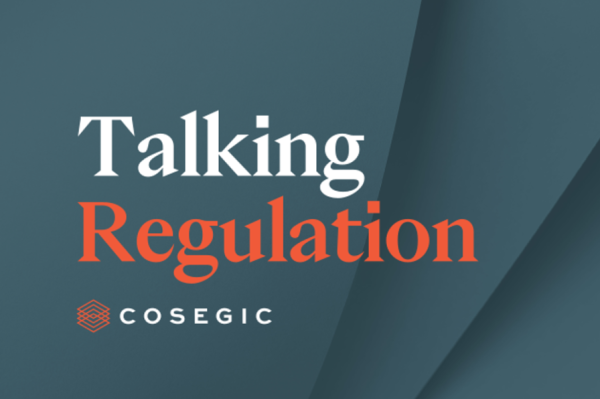Following our previous article (on 08 September 2021) on the proposed delivery and regulation of the New Payments Architecture (NPA), this article provides a snapshot review of the Payment System Regulator’s (PSR's) recent policy statement published on 06 December 2021. This policy specifically focuses on the regulatory framework for the NPA’s central infrastructure services (CIS) and our article will provide you with the information you need to understand the effect this framework could have on the payments industry.
What is behind the inception of the NPA?
The renewal of the UK’s interbank payment structure into the NPA has been consulted on by the PSR. The NPA is the amalgamation of most of the UK’s interbank payment systems into one unified payment system. The NPA is not set to be launched yet, but the PSR has already published its regulatory approach to provide clarity to stakeholders in the payments industry.
The responsibility for the design and delivery of the NPA is in the hands of Pay.UK, the operator of Faster Payments and Bacs. The challenge is for Pay.UK to propose the implementation of the new structure without causing unwarranted disruption to the operation of businesses and use of clearing and settlement services by customers. The ultimate goal is to help to achieve a fair and systematised payment ecosystem.
The complexity of the transition to the NPA is no easy feat, with in-depth considerations on owning the procurement process for selecting CIS providers, technological changes, and the ‘setting up’ of accessibility to the NPA for new and current businesses (e.g. via payment gateways and software products).
What is the NPA regulatory framework addressing?
The NPA regulatory framework appears to host a well-considered and pragmatic approach to laying down the tracks for a sensible and efficient route to the reform of payment processing and security. With Authorised Push Payment Fraud on the rise and other security risks, the evolution of a more secure and resilient payment infrastructure could not be more welcomed.
The regulatory framework consists of:
-
Requirements on Pay.UK to implement the NPA to help lower the risks to competition and innovation;
-
Requirements on a CIS provider.
The NPA seeks to catalyse innovation by using various payment ‘overlay’ services. These will be used by payment service providers to link directly and indirectly to the clearing and settlement infrastructure of the NPA. Overlay services comprise of ‘market overlays’ where services are delivered by third parties to service-users using the CIS or CIS Data, to which the third-party providers will develop service standards and rules relating to fraud prevention or system access to one central payment system.
Account overlays are services that are provided by the third parties to end users which activate or receive payments in the NPA system. For example, the services enable Confirmation of Payee and Request to Pay support users to initiate payments but are not payments themselves.
The PSR considers that open standards for each overlay service should promote competition between different providers to avoid any use of one preferred user, which would inevitably create a monopoly provider of overlay services dominating the payments market.
Essentially, an effective procurement of a CIS contract can help address monopoly risks which is a stepping stone to ‘managing’ competition. This could involve balanced decisions with the CIS provider around the type of CIS provider and the negotiation of service level terms, including pricing. The fairness of the procurement process will be monitored through the imposition of illustrative Special Directions 2 and 3, by the PSR. For example, the direction imposes various reporting requirements to both Pay.UK and the CIS provider.
The desired outcomes for firms are to enjoy faster and cost-efficient access to the new payment ecosystem. For compliance teams, reviewing a cohesive set of interbank payment system rules, rather than those of separate payment systems would be most beneficial!
What are the initial concerns of the regulatory framework?
The immediate areas of concern imposed by potential regulation are explored in the PSR’s consultation and draw on financial costs, impact to the quality of payment services, and the potential lowering of innovation in the market (which could be a bit of a hindrance for any new entrant trying to cross over into the payments world).
Payment firms thrive on competition with other firms as it helps to release the most tech-savvy products, enhancing the payment user experience through providing more choice and cheaper options to accessing information from mobile apps to banking online. With the UK being a hotspot as their chosen territory for seeking firm authorisation, any consultation outcomes around the NPA may impact on the future operationality of an ambitious payments firm. It is still early days for any conclusions on this to be made and it is reassuring to see that both the PSR and Pay.UK are putting competition and innovation at the top of their list.
Next Steps
It could be said that the ambitious approach to structuring a ‘one-for’all’ payment system for processing payments is likely to revolutionise the industry in the same way as Open Banking (OBIE) in 2017. Needless to say, OBIE was both innovative and structured, enabling ‘healthy’ competition between the CMA9 Banks. Accessibility to banking information has certainly been re-defined for consumers in the best way possible, contributing to an ever-growing banking and payments ecosystem. The natural progression is to continue industry development to become bigger and better.
Ensuring the level playing field with competition and innovation is the approach taken by the PSR and would certainly seek to implement a more harmonised interbank system to benefit all users. Whilst we are a long way from reaping the benefits of the NPA (possibly mid-2024 at current projections), we can continue to educate ourselves about the journey and have our say. The NPA is showing the rest of the world how the UK intends to keep up with them by delivering a better payment network.
Related resources
All resources
Talking Regulation: Cosegic's response to FCA CP 24/28

Firms' treatment of customers in vulnerable circumstances – FCA review

Consumer Credit & Insurance Newsletter - February 2025

Portfolio Letter - Mortgage Intermediaries

